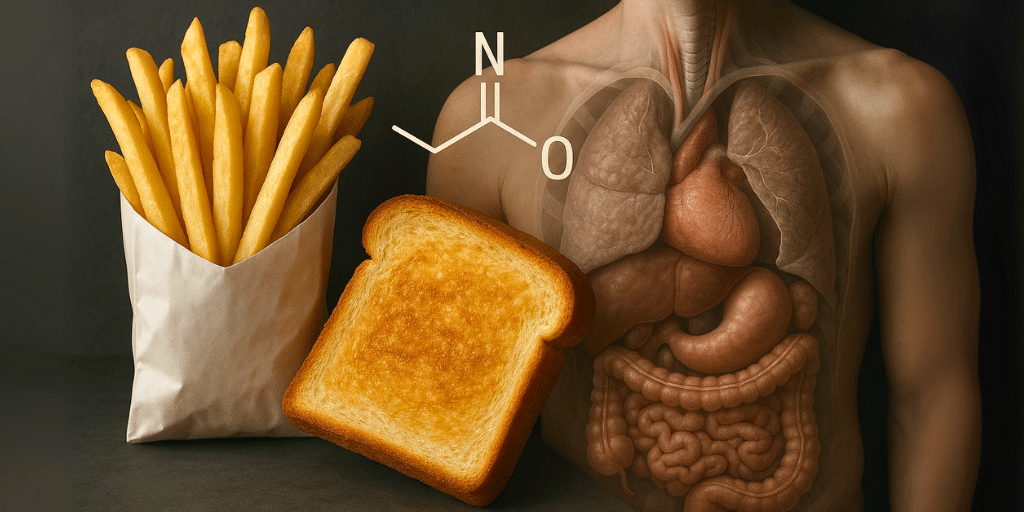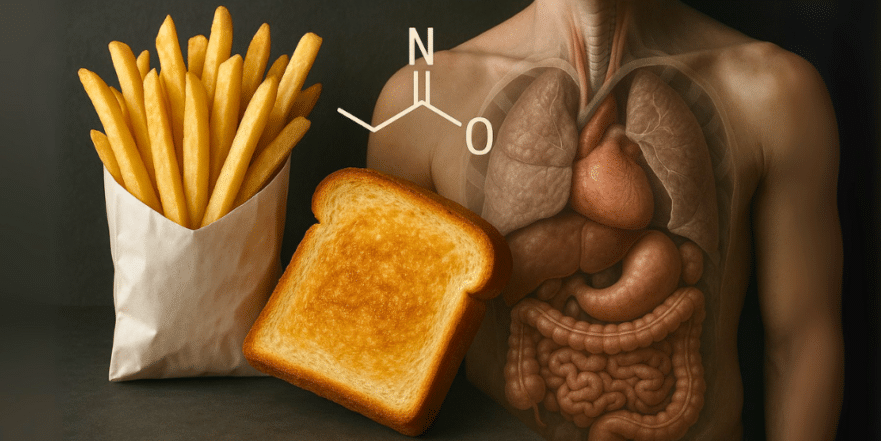
We’re diving into a topic that might surprise you – a dangerous ingredient lurking in our food that’s potentially worse than sugar, high-fructose corn syrup, starches, and even seed oils. This substance isn’t something you’ll find listed on a nutrition label because it’s not added; it’s a byproduct created during the cooking process. It’s a potent neurotoxin, can harm reproductive organs, and is classified as a probable carcinogen by the EPA. Let’s talk about acrylamide.
What Exactly Is Acrylamide?
Acrylamide is a chemical that forms naturally in certain foods during high-heat cooking. It happens when a specific protein, an amino acid called asparagine, combines with refined sugars like glucose, dextrose, glucose syrup, or maltodextrin. When this mixture is heated above 285 degrees Fahrenheit (120 degrees Celsius), a chemical reaction called the Maillard reaction takes place. This is the same reaction that gives bread crust its brown color and toast its flavor, but it also creates acrylamide.
Interestingly, saturated fats seem to prevent the formation of acrylamide. Think back to how French fries used to be cooked in tallow (beef fat) before the 1990s. Even with the starch and protein present, the use of saturated fat meant less acrylamide was produced. If processed foods were made with fats like tallow or coconut oil instead of seed oils, it could significantly lower the cancer risk associated with them.
Key Takeaways
- Acrylamide is a byproduct formed during high-heat cooking of foods containing protein and refined sugars.
- It’s classified as a probable human carcinogen and is a neurotoxin.
- Saturated fats can help prevent its formation.
- Certain foods and cooking methods can reduce acrylamide levels.
Foods That May Contain Acrylamide
Many common foods, especially those that are processed and cooked at high temperatures, can contain acrylamide. This includes:
- Corn chips
- Potato chips
- French fries
- Baked goods (like cookies, crackers, and pastries)
- Breakfast cereals
- The crust of bread
- Roasted coffee
It’s important to note that about 40% of our foods can have acrylamide. The type of sugar used also plays a role; natural sugars like honey or sugar cane are less likely to contribute to acrylamide formation compared to highly refined sugars.
How to Reduce Your Acrylamide Intake
The good news is there are ways to minimize your exposure to acrylamide. Here are some practical tips:
- Cook with Saturated Fats: When cooking at home, opt for saturated fats like tallow, coconut oil, or butter instead of seed oils. These fats are more stable at high temperatures and can help prevent acrylamide formation.
- Use Natural Sugars: If you’re making sweet treats, try using natural sweeteners like honey or sugar cane instead of refined sugars.
- Slow Cook: Lower cooking temperatures and longer cooking times, like slow cooking, can reduce the formation of acrylamide. For example, slow-cooking pork at temperatures below 285°F (120°C) can help.
- Focus on Whole Foods: Prioritize whole, unprocessed foods over refined and processed options. The less processed a food is, the less likely it is to contain the precursors for acrylamide.
- Pair Foods Wisely: If you do consume processed foods, pair them with foods that have protective compounds. Cruciferous vegetables like kale, broccoli, Brussels sprouts, and cabbage are excellent choices. Garlic, sprouts (especially broccoli sprouts), sauerkraut, bell peppers, and citrus fruits (like lemons and limes) also offer protection.
- Choose Coffee Wisely: For coffee drinkers, opt for organic, dark-roasted, or espresso coffee. These are heated to higher temperatures (around 400°F or 200°C), which makes acrylamide unstable and helps it break down. Light-roasted coffee can contain up to ten times more acrylamide than dark-roasted coffee.
- Consider Green Tea and Spirulina: These can also offer protective effects against acrylamide.
The Deeper Science: Maillard Reaction and Glycinamide
To get a bit more technical, the Maillard reaction is key here. When the amino acid asparagine in foods like corn, wheat, rice, and soy is heated with refined sugars above 285°F, acrylamide is produced. Acrylamide can then create another byproduct called glycinamide, which is considered even more dangerous than acrylamide itself. This is a significant concern because cancer is the second leading cause of death globally, and chemicals like acrylamide can dramatically increase cancer risk.
It’s a sobering thought that highly processed foods, which make up a large percentage of many diets (over 50% of calories for adults, and even higher for children), can contain these dangerous byproducts. While we often hear about the dangers of smoking and excessive drinking, understanding the risks associated with everyday food processing is equally important for long-term health.
Source: Dr. Eric Berg

